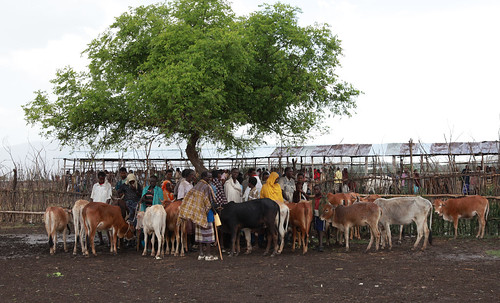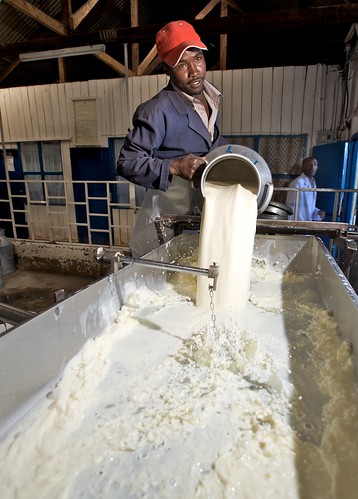Somalia is the largest exporter of live animals from Africa. The country, however, does not have a formal system of grading livestock and livestock products. Such a system is needed to enforce quality control for purposes of stabilizing and expanding international livestock trade. The system would also ensure that the prices of livestock and livestock products are determined on the basis of defined standards.
As a step towards formalizing the existing informal grading system used in Somalia for export quality livestock, researchers from the International Livestock Research Institute (ILRI) and Terra Nuova have identified improved animal nutrition and livestock breeding programs as two possible interventions.
Increasing the quality and availability of animal feed during the long journey from the point of initial purchase to the point of slaughter will lead to enhanced livestock body condition. Body condition was identified as the most important trait used in grading of livestock for export.
Targeted livestock breeding and selection programs will, in the long term, enhance livestock body conformation which was found to be the second most important trait in grading of livestock.
These recommendations are based on a collaborative study by ILRI and Terra Nuova to assess and document information related to the grading of export quality Somali livestock. The specific objectives of the study were to:
- identify the grading system in use for the four types of export quality Somali livestock (camels, cattle, goats and sheep) in selected markets, based on brokers' and traders' local knowledge;
- analyze and document the rationale behind the identified grading system;
- evaluate the relationship between the grading system and price; and
- ascertain the validity of the grading system in real market environment.
Sex, age, body condition and body conformation were identified as the four main traits used in grading of Somali livestock destined for export. The levels within these traits were: sex (male or female); age (years or categorized as either immature or mature), body condition (excellent, good or fair) and conformation (excellent, good or fair).
The interactions of the alternative levels of these traits gave rise to three commercial grades for export quality livestock, classified in decreasing order of quality as grades I, II, III. However, these grades varied depending on the destination of export and use of the animals.
The findings of the study will be a useful source of reference for regulatory agencies and others involved in formalizing and publicizing of Somalia's grading system for export quality livestock.


